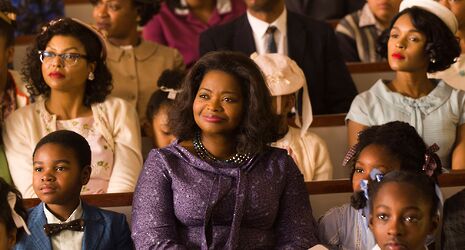Review: Shining a light on ‘Hidden Figures’
Cornelius Dieckmann enjoys the can-do spirit of this biopic, even if at times it teeters to the saccharine

Hidden Figures is no ordinary incarnation of Hollywood’s recent space fever. Hollywood loves space. NASA isn’t trying to bring home Matt Damon from Mars, nor have linguistically advanced aliens landing on Earth. Instead of exploring futuristic science-fiction, this Oscar contender, which is based on true events, offers a look back on the less famous pioneers of space travel.
The year is 1961. The Soviet Union has just successfully sent Yuri Gagarin into the cosmos, with NASA still scrambling to achieve tangible success in the Cold War race for space. Meanwhile, the Civil Rights Movement is well underway. The film combines both strands of American history, because embedded in the grand national space narrative are the personal stories of three NASA employees working in an all-female, all-Black computing division.
“As with any Hollywood film involving NASA, an element of American patriotism is spread on rather thickly, which at times verges on cheesy”
Screening the lives of three real human beings while retaining depth is not an easy task, but director Theodore Melfi makes precisely the right decision in subtly foregrounding Katherine Johnson (Taraji P. Henson) as the main protagonist, without flattening Dorothy Vaughan (Octavia Spencer) and Mary Jackson (Janelle Monáe) into mere bystanders.
As Soviet space development threatens to outclass the United States’, Johnson is promoted to join the Space Task Group, a team frantically working on NASA’s first manned mission. ‘Manned’, incidentally, is a fitting description of the environment in which Johnson finds herself. Timidly approaching her new desk, she is welcomed by the disapproving gaze of a dozen-some pairs of eyes, her new co-workers epitomising the 1960s workplace: black ties, white shirts, white men. The ensuing humiliation of having to run across NASA’s entire campus just to use the only ‘colored’ ladies’ room is as painful to watch as her male colleagues’ rejection of her evident mathematical genius.
“Humour, of course, has an empowering capacity, and such scenes shine a spotlight on neglected aspects such as the beauty of Black intellectual emancipation”
But this is also the film’s greatest strength. With sass and candour, the audience is invited to see the comicality of insecure masculinities, as when a slightly simple-minded patrol officer is dumbfounded by the fact that the three Black women whose car has broken down by the roadside should be on the way to their jobs at NASA – a place of American progress, of all things. Humour, of course, has an empowering capacity, and such scenes shine a spotlight on neglected aspects such as the beauty of Black intellectual emancipation and women in in the history of STEM. The film relishes pithy, slogan-ish lines (“Here at NASA, we all pee the same colour”), which, while occasionally lightly overdone, are immensely quotable.
As with any Hollywood film involving NASA, an element of American patriotism is spread on rather thickly, which at times verges on cheesy. But neither does the JFK and MLK video material from the archives overshadow the characters’ genuine human struggles, nor does the movie’s humour drag it into glib silliness.
Ultimately, the parallelism between sending an astronaut to space and overcoming racism and sexism makes this story a powerful one. Both trajectories show the potential for accomplishing the unthinkable through working together: a man – yes – in space, but one sent there by the hard work of Black female engineers and mathematicians.
This Oscar-nominated film is one with big aspirations and a strong delivery. A homage to persistence, the story is both touching and funny, and in the end manages to inspire
 News / Night Climbers call for Cambridge to cut ties with Israel in new stunt15 April 2024
News / Night Climbers call for Cambridge to cut ties with Israel in new stunt15 April 2024 News / Police to stop searching for stolen Fitzwilliam jade17 April 2024
News / Police to stop searching for stolen Fitzwilliam jade17 April 2024 News / Cambridge University cancer hospital opposed by environmental agency12 April 2024
News / Cambridge University cancer hospital opposed by environmental agency12 April 2024 Interviews / In conversation with Dorothy Byrne1 March 2024
Interviews / In conversation with Dorothy Byrne1 March 2024 Interviews / ‘It fills you with a sense of awe’: the year abroad experience17 April 2024
Interviews / ‘It fills you with a sense of awe’: the year abroad experience17 April 2024


